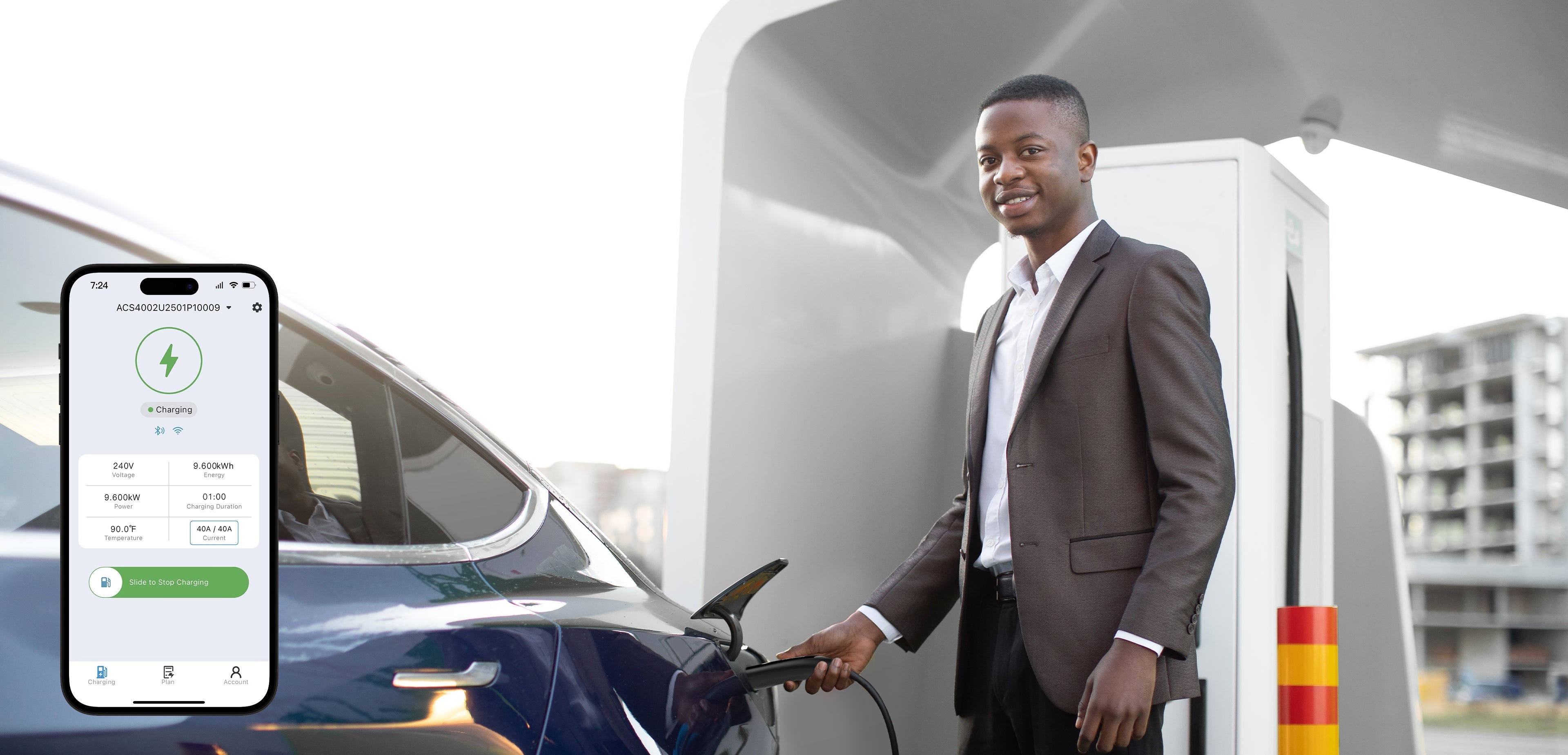As electric vehicles (EVs) become more mainstream, charging solutions are evolving to meet the diverse needs of EV owners. Two of the most common options are portable EV chargers and home EV chargers. While both serve the same basic function—charging your electric vehicle—they differ significantly in terms of performance, convenience, cost, and ideal use cases. Choosing the right one can greatly impact your charging experience, vehicle range confidence, and overall satisfaction as an EV owner.
In this article, we’ll explore the differences between portable and home EV chargers and guide you through key considerations to help you decide which one best suits your needs.
What Is a Portable EV Charger?
A portable EV charger, sometimes referred to as a Level 1 or travel EV charger, is a compact charging device that typically plugs into a standard household outlet (NEMA 5-15 or NEMA 6-20). Many EVs come with one of these chargers included.
Some advanced portable chargers can plug into 240V outlets (like NEMA 14-50), offering Level 2 charging speeds while remaining portable enough to take on the road.
Pros of Portable EV Chargers:
-
Mobility: Easily carried in your trunk or stored at home for use anywhere.
-
Versatility: Can be used at home, work, or public locations with the correct outlet.
-
Lower initial cost: Usually cheaper than home charging stations, especially for Level 1 models.
-
No installation required: Plug-and-play operation using standard outlets.
Cons:
-
Slower charging speeds: Level 1 portable chargers may take over 24 hours to fully charge some EVs.
-
Limited amperage: Lower power output means more charging time.
-
Outlet dependency: Requires access to compatible power outlets, which may not be available everywhere.
What Is a Home EV Charger?
A home EV charger—commonly referred to as a Level 2 charging station—is a more powerful, permanently installed device typically mounted in a garage or driveway. It connects to a 240V circuit and delivers faster charging speeds than most portable units.
Home chargers are ideal for EV owners who want consistent, overnight charging and faster turnaround between drives.
Pros of Home EV Chargers:
-
Faster charging: Adds 25–40 miles of range per hour, compared to 3–5 miles per hour with Level 1.
-
Convenience: Always ready to charge when you park at home.
-
Smart features: Many models include Wi-Fi connectivity, scheduling, energy monitoring, and app control.
-
Better for long-term use: Designed for daily, high-frequency use.
Cons:
-
Higher upfront cost: Equipment and professional installation can cost between $800–$2,000 total.
-
Installation required: Must be wired into your home’s electrical panel by a licensed electrician.
-
Stationary use: Cannot be easily moved or taken on the road.
Key Differences at a Glance
| Feature | Portable EV Charger | Home EV Charger |
|---|---|---|
| Charging Level | Level 1 or 2 | Level 2 |
| Power Source | Standard outlet (120V/240V) | Dedicated 240V circuit |
| Installation | None or minimal | Professional installation |
| Portability | High | Fixed |
| Charging Speed | Slow to moderate | Fast |
| Cost | $200–$700 | $500–$1,200 (+ installation) |
| Ideal Use | Travel, backup, light home use | Daily home charging |
How to Choose: Questions to Ask Yourself
-
Where do you plan to charge most often?
If you rely heavily on home charging, a Level 2 home charger offers unmatched convenience. But if you frequently travel or need flexibility, a portable unit is invaluable. -
How fast do you need to charge?
Consider your daily driving distance. If you're driving 10–20 miles per day, a Level 1 portable charger may suffice. If you drive more or have multiple EVs, a Level 2 home charger is recommended. -
Do you have access to a 240V outlet?
Without a 240V outlet, you'll be limited to slower Level 1 charging unless you install one. Some portable Level 2 chargers work with RV parks or dryer outlets (NEMA 14-50), offering a middle ground. -
What’s your budget?
Portable chargers cost less upfront and have no installation fees. Home chargers cost more but offer long-term benefits, including potential rebates or tax credits. -
Do you want smart features?
Many home chargers support smart charging features like scheduled charging during off-peak hours, remote monitoring, and integration with solar systems. Some high-end portable models also offer smart functionality.
When to Choose a Portable EV Charger
Choose a portable EV charger if:
-
You need flexibility and travel often.
-
You want a backup charging option.
-
You don’t drive long distances daily.
-
You live in a rental property or can’t install a fixed charger.
-
You're on a tight budget.
Best for:
-
Occasional EV drivers
-
Apartment dwellers
-
Road-trippers and campers
When to Choose a Home EV Charger
Choose a home EV charger if:
-
You own your home and park in a garage or driveway.
-
You drive daily and require fast, consistent charging.
-
You want the convenience of a plug-and-forget solution.
-
You value smart features and long-term durability.
Best for:
-
Daily commuters
-
Multi-EV households
-
Homeowners investing in green infrastructure
Final Thoughts
Both portable and home EV chargers have their place in the EV ecosystem. Your choice depends on your lifestyle, driving habits, charging access, and budget. Some EV owners even opt to have both—a fixed home charger for daily use and a portable charger for flexibility during travel or emergencies.
Regardless of your choice, having reliable access to charging is one of the most important aspects of EV ownership. With thoughtful planning, you can maximize convenience, minimize downtime, and make your transition to electric driving seamless.
Recommend Reading: Best Portable and Home EV Chargers in 2025: Top Picks and Comparison Guide








Share:
Best Portable and Home EV Chargers in 2025: Top Picks and Comparison Guide
How to Protect Your EV Battery in cold weather?
1 comment
If you want to buy quality links to grow your online portal, we are with top websites based on tech, gaming, business, fashion, and sports. All these sites are good for buying quality links.
Your time and interest are highly valued, and we eagerly await your response.
I am waiting
Thanks